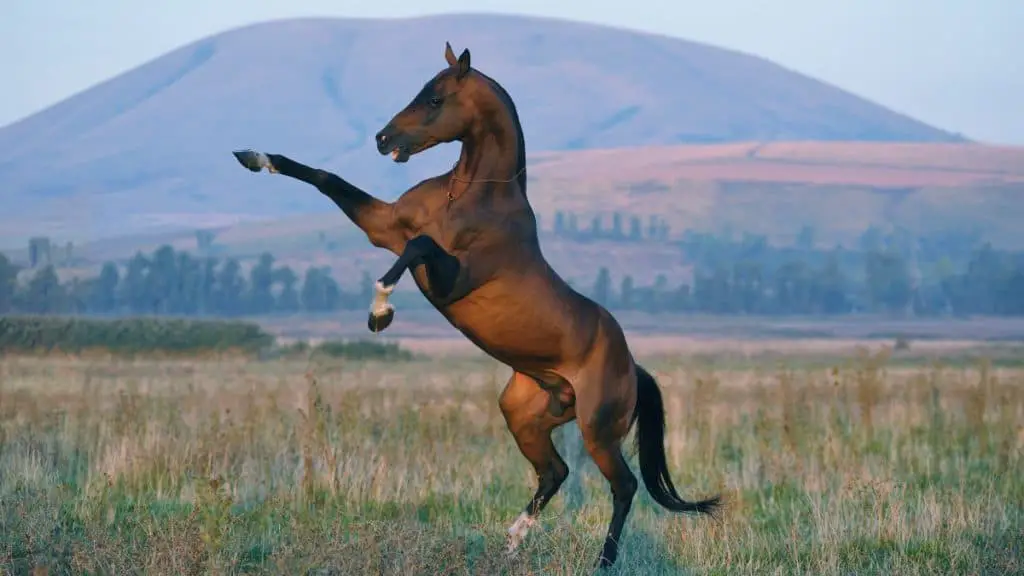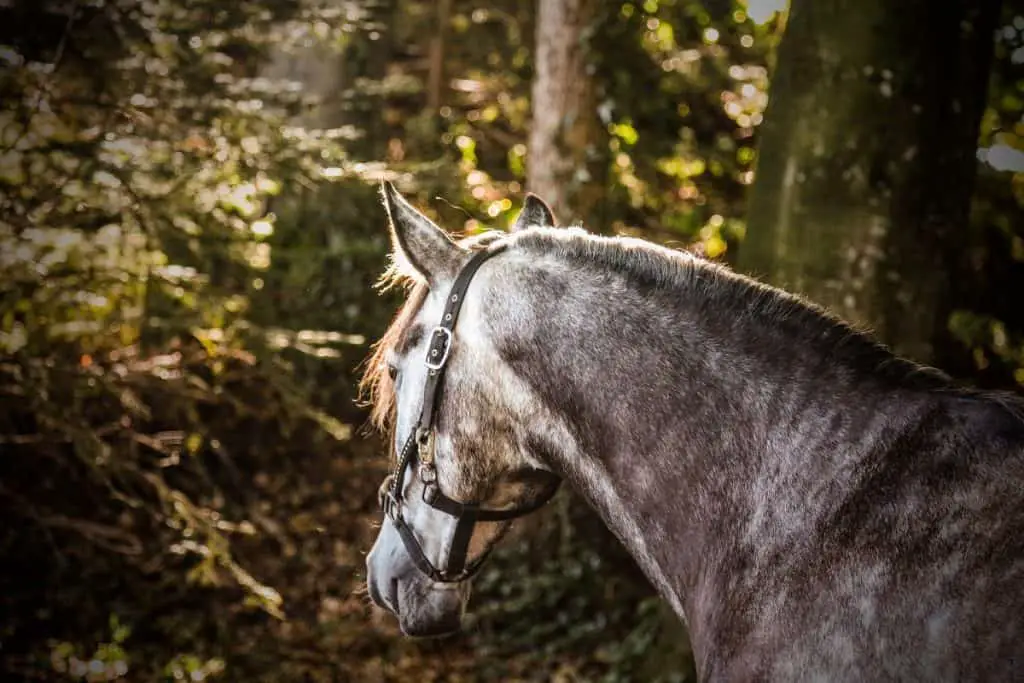Skip To Section
Horses are a marvelous breed of animal. You may be in the market to purchase one, or merely trying to select which type of horse you want to ride. Whatever the case, there are some differences that you need to be aware of when it comes to the gender and other specifics of the horse you are intending on having your interaction with.
When it comes down to stallion vs gelding vs mare, there are an assortment of characteristics to look at from mood, riding style, and aggressive nature. Picking what type of horse you want to interact with requires a look at all these different facets.
So if you are looking to own or ride a horse, what do you need to be aware of? What makes the difference between the three? What do you need to look for? Each has its advantages and disadvantages when it comes to what they provide regarding the experience and interaction with them.
Let’s take a look at each.
1. Stallion

What Is A Stallion?
A stallion is a male horse that is uncastrated that is specifically used for breeding purposes. Unfortunately, they may be prone to aggressive behavior, especially around other stallions. They tend to be dominant around other horses, and even human beings. With proper training, stallions can behave properly at the will of their handler.
Stallions, when handled properly, are used in horse racing competitions, and even Olympic events. They do however, have a tendency to bite, leaving handlers at the task of making sure they cooperate within a strict set of guidelines that are part of their training.
Riding Advantages
If you can find a stallion that has been trained well, you might find some advantages of riding one. They are built for competition.
Riding Disadvantages
Stallions are very temperamental and difficult to handle. They will buck you off at the slightest gesture of discomfort. Some veteran trainers even refuse to ride on stallions because of their unpredictability when it comes to riding them.
You must always ride a stallion under close supervision because basically you never know what they are going to do or how they are going to act.
2. Gelding

What Is A Gelding?
A gelding is a castrated male stallion. This is done to make the animal more suitable for its use and prevent the aggressiveness that comes with having a stallion. Geldings are better behaved because the need for dominance and competition with both horses and humans has left them due to being castrated.
Sometimes horses are gelded if they are not typically in the running for breeding. This is to prevent them from reproducing less than adequate offspring. Due to humans wanting the best genetically formed horses, sometimes a stallion will be turned into a gelding to prevent this from happening.
Riding Advantages
Geldings have fewer mood swings than the other two types of horses. It is much easier to handle. If you want a more relaxing ride, a gelding is what you want to ride on for your first experience.
Unless you are an expert rider, a gelding will fit the bill for manageability while you ride. They also tend to not act up when going for a ride.
Riding Disadvantages
This depends on how late in the development life cycle that the horse was gelded. If the horse was gelded too late in its life, the horse may still get tendencies to be aggressive at times, making it unrideable. The horse needs to be gelded at a young age for the aggression to subside later in life when the horse is being used for riding.
3. Mare

What Is A Mare?
A female horse is considered a mare. A horse is considered a mare when it is over the age of three. Mares are more cooperative than stallions but still chosen over geldings because of their temperament at times.
When it comes to breeding season, mares can be hard to handle. They are notorious for being unwilling to abide by their handler’s instructions when this time of season comes along.
Mares are used often in equestrian sports and are sometimes used as dairy animals in certain cultures. Mares have actually won famous races matched up with their stallion counterparts in events such as the Kentucky Derby and The Preakness Stakes.
Riding Advantages
Riding a mare is advantageous over a stallion. They don’t have the aggressive nature that comes with stallions or the dominance that is attributed to the male stature of the horse.
Riding Disadvantages
Mares can still be temperamental. Just because they are not male horses doesn’t mean they do not get in heat when the time of season comes around. For this reason, they can be a bit moody when it comes down to riding them if it is their time of the year for breeding.
They are easier to ride than a stallion, yet harder to ride than a gelding due to the mood swings that come with the gender genes that are engrained inside of them.
Pros And Cons Comparison
| Pros | Cons | |
| Stallion | Fit for competition. Strong and capable. | Aggressive. Temperamental around humans and other horses. |
| Gelding | The easiest to handle as far as mood swings go along with being the least aggressive. | Depends on the horse what type of mood you will get. Some still have urges if gelded too late. |
| Mare | An adequate competition horse fit for equestrian and racing events. | Can be more temperamental than a gelding. Are hard to handle when in heat. |
Which Type Is Best For Beginners?
If you are a beginner in the realm of horse riding, you have a few options as to which horse you want to ride. If you are going to be the safest possible, we suggest you go with a gelding.
Geldings have the least amount of aggressiveness and are fairly predictable when it comes to riding. You don’t have to worry about the aggressive nature when it comes down to interacting with other horses or worry about them being competitive with other humans even like some stallions can be.
A gelding is your safest bet for a smooth ride.
Which Type Is Best For Racing?
If you want to have the strongest most capable horse to race, a stallion would be your pick when getting involved with competition. While mares can be comparable and have won many races over stallions, the track record shows that stallions are the main breadwinners when it comes to winning races.
Studs are used not only for their racing capability but if they are a good racer they are used for the breeding possibilities. Stallions make up 60% of the racing world, and most of those horses after retirement go on to be breeders of future good genetics.
Conclusion
When picking a horse to own or to ride, make sure you look at the differences between male and female horses, castrated or not. Each one provides their own experience and temperament.
No matter what you are looking for in a horse, it always comes down to good training that will define your experience with the horse you are interacting with.
Even though you can’t sometimes go against natures with how the horses want to act, good training will always help in assisting you with the best experience possible with a horse.
